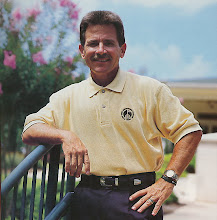The playing conditions of the golf courses located on the North Shore of Chicago vary greatly at times from the conditions you may find on courses in the Southern and Western parts of Chicagoland. Areas away from the lake are generally drier, warmer and have more wind. There is a lake affect that influences the temperatures and climate for those courses located in close proximity to Lake Michigan. Generally, the temperatures are cooler and moister and exposed to less winds. Therefore, you will not see the hard and very dry course conditions that you might find elsewhere.
In an effort to keep our fairways as dry as possible while ensuring their health, we are increasing a number of agronomic practices and programs. In the past, the directive and intent was to have more of a pad under the surface of the fairways so that golfers could "sweep" the ball more. However, this results in a more padded turf offering less roll. For this season, we will be:
1. Topdressing the fairways & green's approaches more frequently with sand to reduce the padded layer that may result in more roll in the coming years. This process does not happen overnite.
2. Brushing the fairways more so the turf will stand up straighter and not lay over as much.
3. Verticle mow the fairways to promote a more upright growth pattern.
4. Watering by hand as much as possible so that we apply water to exactly those areas on the fairways where the turf is drying out significantly or wilting.
5. Mowing at a lower cutting height. This will result in a tighter lie but potentially more roll.
6. Cross cutting the fairways at a 90 degree angle assists in reducing grain and aides in producing an upright growth of the turf.
7. Aerifying fairways more to remove the "thatch and pad" that we have intentionally allowed to form.
7.
The quest for firmness will result in some discoloration of the turf as the plant is deprived of adeqate moisture.
Each of the above factors contributes to firmer fairways in a particular way. The fairway conditions will not change drastically in a single season. It will take several years or more to make the transition and even then, weather will play a significant role in our fairway condition. I can implement a number of agronomic changes but the weather and the existing soil conditons are the main influences. The heavy clay soils that we have on the property exhibit the properties of going from being totally saturated and wet to hard and dray in a matter of days. When they do become very dry, resulting in turf wilt. This is why you will see the staff hand watering certain areas.
The photo below exhibits the significat impact that weather has on course playing conditions.
We had 7 inches of rain in the month of April. It rained 10 days out of the month with cool temperatures.
During cooler and wet periods, it takes weeks for the course to dry.
















